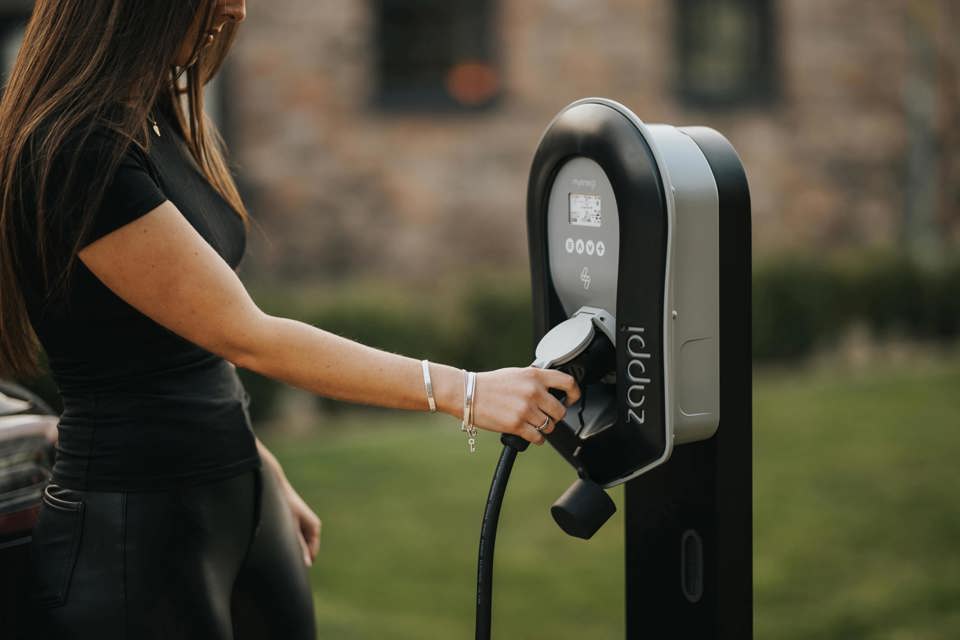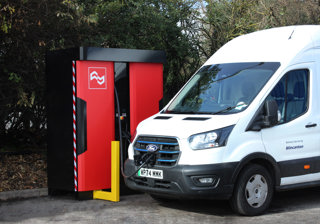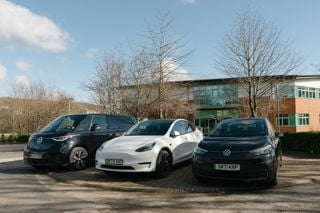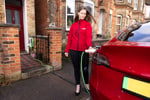Following a two-month consultation period on the 2030 ICE ban and ZEV Mandate, the Government has announced its new policies – and they will affect fleet operations.
The Government received more than 600 responses to the consultation. Changes include allowing hybrids cars and vans to be sold until 2035, while manufacturers will also be able to sell petrol and diesel vans until that date, after which only zero emission cars and vans can be sold.
The workings of the ZEV Mandate have also been changed to give manufacturers greater flexibility to avoid any potential fines for failing to meet targets.
Here we look at four things fleets they should know about the new consultation and what it may mean for them:
1 New petrol and diesel vans can be sold until 2035
Following a two-month consultation period on the 2030 ICE ban and ZEV Mandate, the Government has announced its new policies – and they will affect fleet operations.
The Government received more than 600 responses to the consultation. Changes include allowing hybrids cars and vans to be sold until 2035, while manufacturers will also be able to sell petrol and diesel vans until that date, after which only zero emission cars and vans can be sold.
The workings of the ZEV Mandate have also been changed to give manufacturers greater flexibility to avoid any potential fines for failing to meet targets.
Here we look at four things fleets they should know about the new consultation and what it may mean for them:
1 New petrol and diesel vans can be sold until 2035
2 New hybrid cars can be sold until 2035
3 ZEV mandate changes may change van procurement
4 No new electric vehicle grants were announced
1 New petrol and diesel vans can be sold until 2035
Perhaps the detail which will have the greatest effect on fleets is that manufacturers will be able to sell new diesel and petrol vans until the 2035 deadline after which only zero emission vehicles will be allowed to be sold in the new vehicle market.
Transitioning light commercial vehicles to zero emission models is proving to be much more difficult than switching cars to electric, and this decision could help ease the issue.
“Cars, small vans and stuff like that, we’re doing it in our sleep almost,” James Rooney, head of road fleet at Network Rail, told the Fleet News Awards Roundtable.
“But the others are very difficult. Currently we are taking delivery of our last diesel vans, but how the hell do you move four-wheel drives, large vans and welfare vans right now?”
As part of the Government, Network Rail – like many other organisations – is working to a 2030 deadline to switch to a fully-electric fleet, but for companies who are working without this restriction, it gives them more time to solve these issues and achieve a smooth transition.
“From a fleet industry point of view, the big news here concerns vans,” says Paul Hollick, chair of the AFP (Association of Fleet Professionals). “The new revisions create a degree of breathing space with diesel and hybrid vans available until 2035.
“This looks like a more realistic timeframe that will allow ongoing development of new vehicles and a process of adaptation by fleets.”
Chris Joyce, managing director of Sogo mobility, adds: “The extension provides businesses with crucial additional time to develop and implement effective strategies for integrating electric vehicles into their fleets, while managing the demands of a turbulent economy.
“The extension also acknowledges the current state of the UK’s electric vehicle infrastructure, offering a realistic timeframe for necessary developments to support a broader range of zero-emission vehicles.”
However, Peter Golding, managing director at FleetCheck, argues the extension may have a negative effect.
“In creating a situation where diesel and hybrid vans can stay on sale until 2035, they’re potentially just giving fleet operators an excuse to continue using ICE vehicles and ignore the issue for a few more years,” he says.
Manufacturers are required to make sure than in the period from 2030 until 2035 the overall CO2 emissions of their non-ZEV fleet get no worse than they were in 2021.
2 New hybrid cars can be sold until 2035
The original ZEV Mandate said new cars could be sold if “they have the capability to drive a significant distance with zero emissions (for example, plug-in hybrids or full hybrids) and this will be defined through consultation”.
What the ‘significant distance’ was, was never set but the Government has now clarified that all full hybrids, such as the Toyota Prius and Nissan e-Power models, will be able to be sold until 2035.
Before reaching this decision, the Government considered there were three broad approaches which could be used to enact the phase out of ICE-only cars, and these could be used alone or combined.
These were technological definition, vehicle level CO2 cap and non-ZEV fleet average CO2 cap.
A technological definition would define which cars are committed by how the vehicle is powered. The three technologies which can be sold from 2030 are full hybrid EVs (HEVs), plug-in hybrid EVs (PHEVs), and range-extended EVs.
The consultation says while some models of mild hybrid EV are capable of sustained zero emission propulsion at low speeds, they are not capable of sustained zero emission propulsion and instead rely on their internal combustion engines. As such, this type of technology will be phased out by 2030.
It also pointed out that there are a number of petrol and diesel cars that emit lower levels of CO2, in absolute terms, than many HEVs and PHEVs.
This meant that establishing a technical definition on its own could permit less efficient hybrids to be sold but prevent efficient petrol and diesel cars from being sold, contrary to the aim of cutting emissions from the new car fleet.
In the end, the Government decided on a combination of technical definition and non-ZEV fleet average CO2 cap.
The sale of full hybrids (HEVs) and PHEVs will be permitted after 2030, but manufacturers will need to make sure the overall CO2 emissions from these cars is 10% lower than it was in 2021.
3 ZEV mandate changes may affect van procurement
The Government has made a number of changes to the ZEV Mandate to allow manufacturers greater flexibility to avoid any potential fines for failing to meet targets.
Under the original mandate, ZEVs must last year have made up 22% of an OEM’s new car registrations and 10% of their new van sales, or they would face fines of £15,000 for each car and £18,000 for each van sold outside the target.
The proportions would increase annually until 2030, when they would be 80% and 70% respectively.
This demand sometimes led to significant discounts for fleets on BEVs as manufacturers pushed volume to meet their targets.
The effect of the ZEV mandate also led to other challenges for fleet operators; for example, with bulk orders of diesel vans, manufacturers were often insisting that 10% of them had to be fully-electric.
“The problem is that some fleets just don’t have a role for these electric vans within their business,” Paul Hollick, chair of the Association of Fleet Professionals (AFP), told a Fleet News at 10 webinar.
“Their payload and range requirements mean there is no operational profile for which the electric van can be practically used, or there is no suitable charging infrastructure.”
It presented a conundrum for fleets – whether to try and place orders with manufacturers who were not insisting on order quotas, to not replace existing diesel vehicles and keep operating them for longer, or to buy the quota electric vans and use them for occasional lighter duties or simply park them up.
While these volume targets remain unchanged, the size of the fines have been reduced to £12,000 and £18,000 respectively – reductions of £3,000.
Although no manufacturer has yet had to pay any fines under the ZEV Mandate, the Government has also refined the credit scheme to give manufacturers greater flexibility.
As before, there are mechanisms which allow manufacturers to reduce – or completely remove – the fines which need to be paid for missing the targets.
The Government consultation made clear that the majority of manufacturers sought more flexibility in the short term so they can be compliant with the mandate without having to pay fines or become involved in credit trading if they do not wish to.
The Government is also introducing a new flexibility within the credit system for manufacturers who produce both cars and vans.
Previously, car and van emissions had been kept separate, but manufacturers who have overachieved against either the car or van targets now have the ability to transfer excess credits to the other scheme to help achieve compliance.
The Government has also extended the flexibility which allows manufacturers to create ‘credits’ by reducing emissions from its non-ZEV fleet compared to a 2021 baseline. This was due to expire in 2026, but has been extended to 2029.
While the impact of these changes are not yet known, they may ease the pressure on van makers to sell more electric commercial vehicles to reluctant customers.
4 No new electric vehicle grants were announced
December’s consultation document raised the prospect of additional incentives to further support the transition to ZEVs, seeking views on both this and the measures already in place.
Current measures include tax incentives, investment in charging infrastructure, £2bn support for zero emission vehicle manufacturing and supply chain, and targeted grant support for consumers such as the plug-in van grant.
However, no mention on any new incentives was included in the Government announcement on Sunday.
“The transition will not take hold on its own and it is disappointing no additional measures were included for drivers who, similarly to car manufacturers, need some support to make the switch,” says Warren Philips, chair of EVA England.
“We need Government input to tackle high EV upfront costs in the short term and to help more households access charging affordably, especially for those who can't easily plug in at home.
“Failing to tackle prevailing barriers to uptake will scupper the Government's rightly ambitious targets to move away from petrol and diesel this decade.”
Login to continue reading.
This article is premium content. To view, please register for free or sign in to read it.






















Login to comment
Comments
No comments have been made yet.